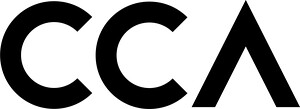1920 rue Baile
Montréal Québec H3H 2S6
Canada
Hello, this is me. And I’m wary of the present.
We tend to look to the past for guidance on what to do today. Architects also project themselves into the future, sometimes as a way to understand or better analyze the present. But the present is relentlessly assertive. It obscures our read on past events and future possibilities.
My mandate—to make architecture a public concern—doesn’t require that I focus only on the present. I think I could make architecture a public concern displaying Palladio. But I have found that if I don’t engage contemporary society somehow, I am not a relevant institution.
To be relevant, to be contemporary, my relationship to the past has to change. This often means not investigating what is happening now or has happened in the past directly, but instead stretching backward to make the past current—to plug into a longer perspective. With this perspective, Palladio is no longer long distant. The same goes for the future.
My relationship to the present also has to change. To be contemporary in this sense requires finding a position somehow outside the now, a grounding relative to what is happening around me. As a lens and method of working, the grey areas I’m interested in are a means for getting outside of a cycle of crisis and response, particularly within architecture, to plot a course that is out of step in a productive way. Grey areas can destabilize some fundamental assumptions about the present around us by leaving it behind, looking around and under it, which turns out to be the only way to really come close to it.
I realize that many others have reflected on what it means to be contemporary, and I agree with those who have concluded that the only way is to be untimely, to stay perpetually out of step with the now. Being contemporary is seeing not only the lights of the present, but also the darkness around them. To be contemporary is to recognize that the present is utterly out of reach, moving away from us even as we attempt to locate ourselves in it. It means accepting a certain type of seeming irrelevance in order to become actually relevant.
To confront others with these and other reflections, I started assembling some material. The result is the first volume of a new series.
You are invited to join me and invited accomplices to continue the questioning of our relevance, over conversations I organized in different places around the launch of The Museum Is Not Enough, which I co-published with Sternberg Press.
October 18, 9pm, SYNNIKA, Frankfurt am Main
With Mirko Zardini, Albert Ferré, and Nikolaus Hirsch
October 20, 9pm, Bar Laika by e-flux, Brooklyn, NY
With Giovanna Borasi, Jayne Kelley, and Irene Sunwoo
October 23, 7pm, La Central del Raval, Barcelona
With Mirko Zardini, Albert Ferré, Ethel Baraona Pohl, and Judit Carrera
November 2, 6pm, Hagiso, Tokyo
With Giovanna Borasi, Mirko Zardini, Albert Ferré, Mitsuyoshi Miyazaki, and Junko Iwabuchi
The Museum Is Not Enough is the result of collective reflections on architecture, contemporary social concerns, institutions, and the public that I have undertaken in recent years. Building on years of thematic investigations and of a continued questioning of the role of cultural institutions and the issues they face today, the volume puts forward my own positions and opens them up to a dialogue with designers, curators, photographers, publishers, and other institutions who ask themselves similar questions.
It is edited by Giovanna Borasi, Albert Ferré, Francesco Garutti, Jayne Kelley, and Mirko Zardini, with contributions from Noura Al Sayeh, Greg Barton, Ruth Estévez, Fredi Fischli and Niels Olsen, Stefano Graziani, Dan Handel, Martin Huberman, Wilfred Kuehn, Kalle Lasn, Maria Lind, Kieran Long, Ligia Nobre, Mike Pepi, Damon Rich, Filippo Romano, Mika Savela, Bernd Scherer, Jack Self, Astria Suparak, Shirley Surya, Jesús Vassallo, James Voorhies, and Mark Wigley.
Graphic design by Studio Jonathan Hares.
Published in French as Le musée ne suffit pas.
For further information, please contact me via media@cca.qc.ca.



